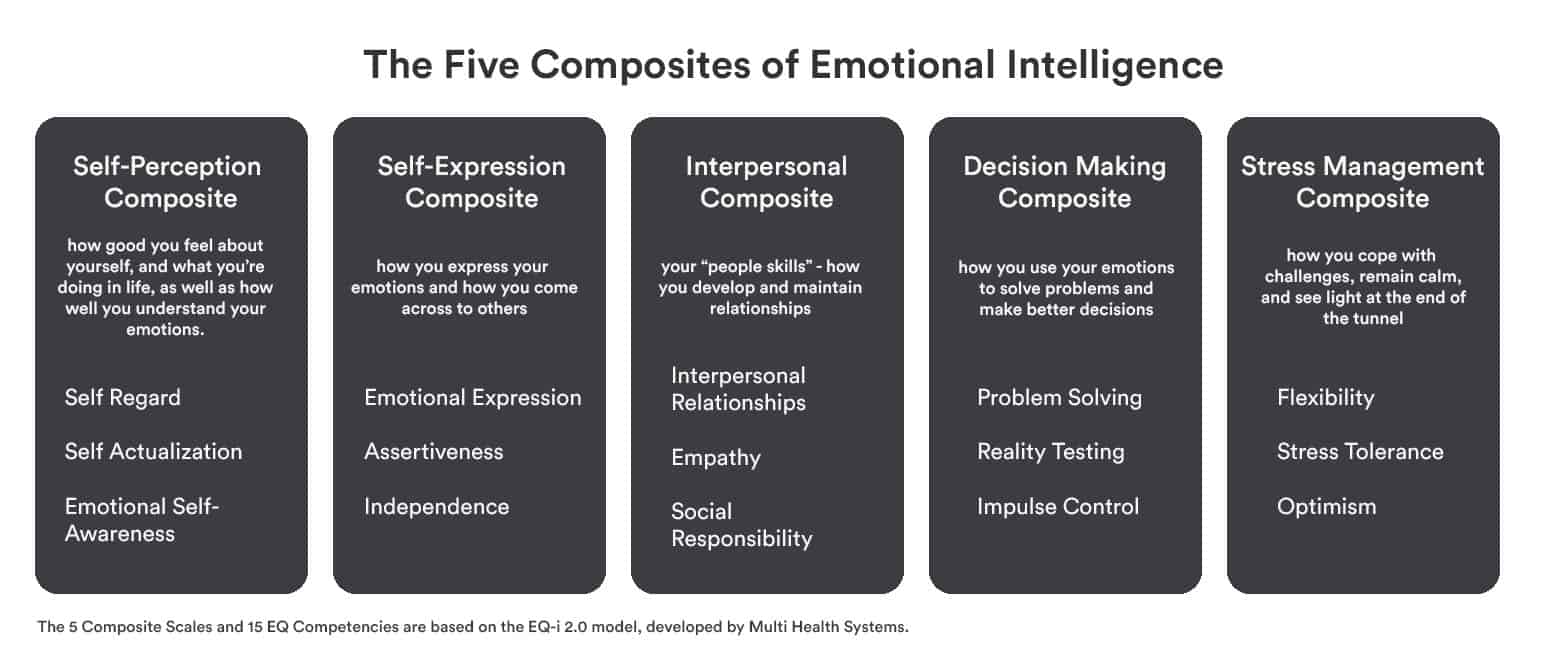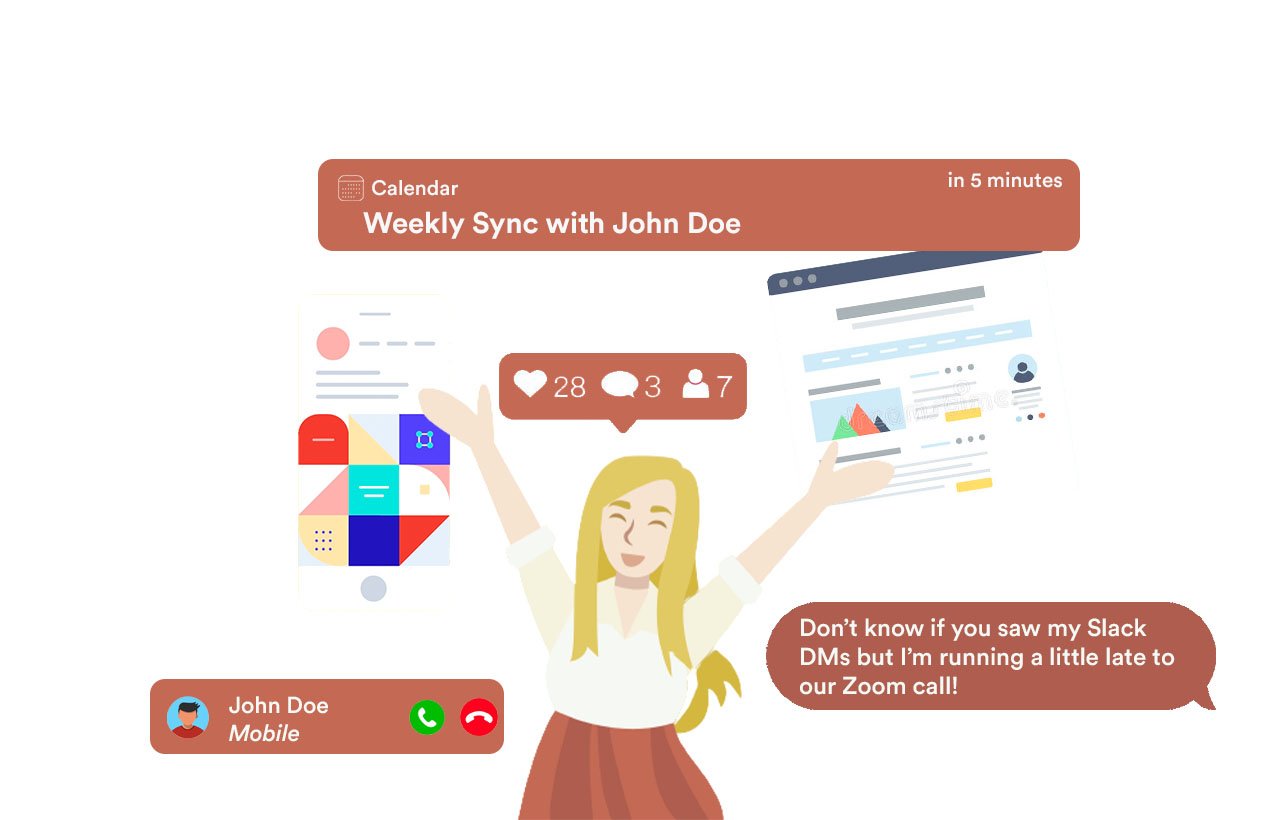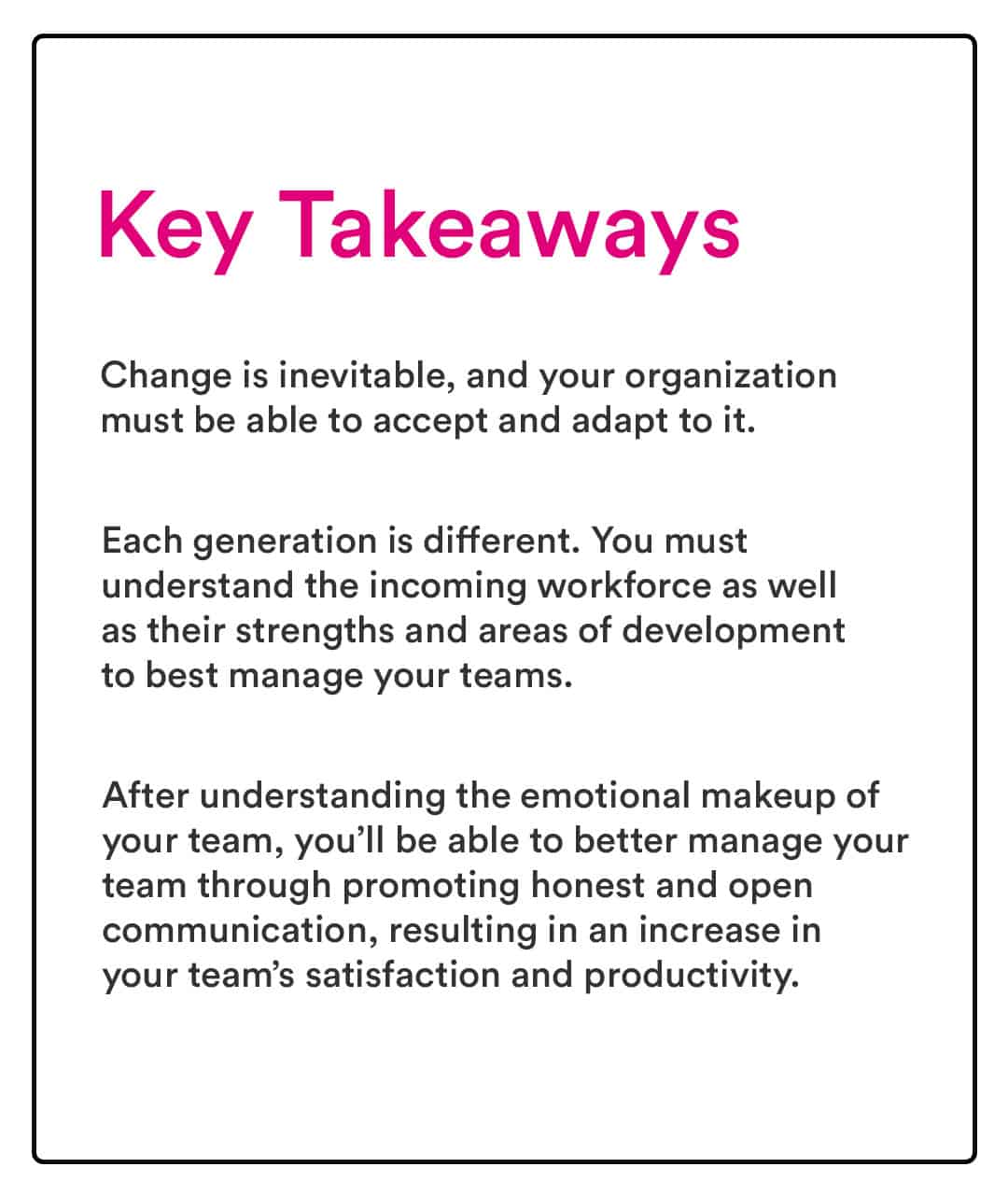Two hundred years ago, carpentry and hand-sewing were considered some of the most important and valuable skills to have. With the onset of the Industrial Revolution, the value in those skills shifted to operating machinery and utilizing simple technologies to streamline the process. As we’re scraping the surface of the digital revolution, we’re finding that the value of skill sets have yet again changed, favouring analytical and soft skills.
Now, the changes in skill sets aren’t the only shifting puzzle piece within your organization. There is a new generation entering the workforce: Generation Z. With Millennials and Generation Z predicted to make up over 60% of the global workforce by 2025, it is vital for organizations to understand who they are, and how the digital world they grew up with will influence their performance and behavioural tendencies at your firm.
Looking at these two dynamic elements creates the need to take time and assess the skill sets and competencies of the incoming workforce.
Let’s get you caught up to speed.
Before we jump right in, let’s go over some definitions and key concepts that we’ll be referring to quite a bit during this article. Feel free to skip on ahead if you’re already familiar with these concepts.

Emotional intelligence can be generally summarized as the “understanding emotions and emotional knowledge, and to reflectively regulate emotions so as to promote emotional and intellectual growth”. Emotional intelligence can be divided into five composite scales, which you can learn more about here or below.

Who will make up your organization in the next five years?
With change being inevitable, you and your organization need to assess how you will accept and adapt to those changes, beginning with your personnel. Not only is the environment you are operating in shifting, but the personnel and culture of your employees and new hires are evolving at a rapid rate as well.
The workforce in 2021 has been categorized into three distinct generations, with each having their own defining qualities. While Generation X is known for their independence and self-resilience, Millennials are known for their intuition with technology and innate desire to do meaningful work. The newest generation entering the workforce is Generation Z, who are known for their fluency in technology and ability to intake content.
With each generation being unique, it’s vital to understand how to best select candidates to enter your organization, while also considering the shift in valuable skills within the workforce. By gaining a strong understanding of your current and potential employees, you are able to determine how to best select them for your firm. Next, you can develop your team members by guaranteeing that their skill sets are aligned with the skills in demand for today’s job market.
Let’s start off by delving into who Generation Z might be.
She is also incredibly tech-savvy, as learning new technologies is almost second nature to her, and usually takes initiative in learning new softwares through watching YouTube tutorials, or just looking up tutorials on Reddit and other social media platforms.

The Effect of the Pandemic on Generation Z
Each generation has a defining moment. For Generation X, it may have been the energy crisis during the 1970s, and for Millennials, it could have been the 9/11 Attack, as well as the global economic crisis of 2007.
What would Generation Z’s defining moment be? The COVID-19 pandemic.
According to the Harvard Business Review, Generation Z is experiencing the “greatest national trauma since the Great Depression and World War II” as those beginning their careers were fired or had offers rescinded, while those in school were suddenly confined home, devoid of much physical contact with their network. This overnight shift will be forever ingrained in Generation Z’s collective memory and will reinforce their internal fears surrounding uncertainty in the future.
After understanding the future of the workforce, let’s take a step back and take a look at the projected skill sets needed for organizations to grow. From the World Economic Forum’s Future of Job Report, insights can be drawn that problem solving makes up half of the top skills of 2025, including analytical thinking and innovation, critical thinking and analysis, reasoning, and ideation, to name a few.
Problem solving falls under the Decision Making Composite from the EQ-i 2.0 model developed by Multi Health Systems. Learning how to find solutions to emotional problems is a skill critical for success in the future, and can be learned through our online courses or live workshops.
Two aspects of problem solving include critical and analytical thinking. While they are often interchangeably used, there are minor differences between the two. While analytical thinking breaks down information into smaller pieces, critical thinking takes external knowledge into account while analyzing information. These two skills are increasingly important, because knowledge is so accessible by the general population. What sets a team apart is their ability to take that information, and apply it into their practices.
With the onset of the pandemic, another emerging strong skill set would be emotional resilience. Emotional resilience allows individuals to cope and manage with stress and changing times well, while keeping their own emotions in check. Emotional resilience is essential to thrive through changing times, as leaders are dealing with stressful situations but need to be emotionally stable. This has been emphasized heavily with the pandemic as many offices were forced to go digital.
So now that we have a firm understanding of the skill sets that will be vital in both current and future workforces, let’s compare this against the skill sets of the incoming workforce.
Gaps in Generation Z Gina’s Skill Set

While Gina seems to have all the right technical tools and skill sets of working well within any firm, that may not necessarily be the case.
From the graph, it is apparent that Generation Z is lacking in many of the emotional competencies compared to other generations, specifically in independence, stress tolerance and problem solving. Gen Zers struggle to make quick objective decisions. They seek validation and reassurance from Google, their parents, and others. They worry about making mistakes, and have a lot of self-doubt.
Alongside with the World Economic Forum’s graph above, there is a gap in skills required and our current pool of workers entering the job market. While emotional intelligence is becoming increasingly more important in the workforce, there is less and less of it in the candidates entering the workplace.
This can stem back to the current education system. Educational institutions are not placing a strong emphasis on emotional intelligence. While Generation Z Gina’s professors in college have been teaching her technical skills and piling on a workload that can cause Gina a lot of stress, her instructors haven’t necessarily taught her how to manage her stress levels. This would be an additional reskill that Gina would have to take to thrive in her workplace.
This doesn’t mean all hope is lost for Generation Z Gina though.
Emotional intelligence is an upskill and can be learned and developed with maturity and age. Generation Z is notorious for their desire to learn and openness to external opinions and knowledge. Therefore, they would be open to learning about emotional intelligence and its importance within your firm. Through training and development with empathy and adaptability from your firm, Generation Z would also be able to understand their emotional makeup better, and strengthen your team dynamic.
What are your next steps?
Prior to taking any action, you would want to take a step back, and take inventory of not only yourself, but also your team. Understand where you and your team’s strengths lie by taking an Emotional Intelligence Assessment. After completing an EQ assessment, we generate your EQ results which will give you insight on the areas your team can collectively work towards developing in each of the five EQ composite scales.
Do you have a firm understanding of the emotional makeup of your employees? Take a look at our Assessments – I would recommend the EQ Assessment to find out the emotional makeup of your team and the Change Style Indicator Assessment to find out how your team reacts to change. You can also book a call with me here; I’d love to listen and provide support in any way I can.

If you are interested in learning more about why bringing emotional intelligence into your workplace is essential, check out our blog – Why Emotional Intelligence is Important in the Workplace. Alternatively, if you think your whole team would benefit from building their Emotional Intelligence skills, check out our Workshops.
To learn more about emotional intelligence and how it impacts your organization, sign up for our biweekly newsletter here, where you will receive our latest updates, an inventory of resources, and much more!


